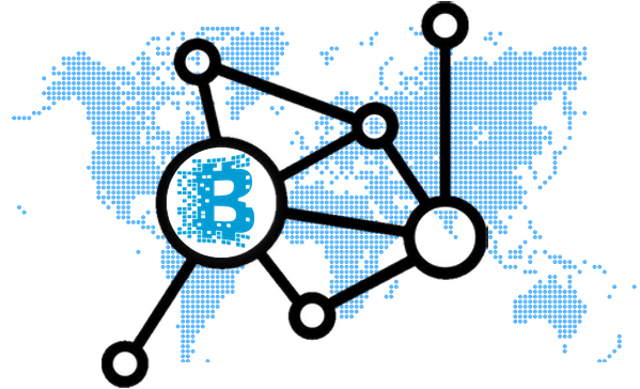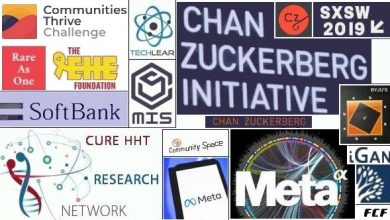
We have become so caught up on the financial value of cryptocurrencies and how they can enrich us that we have lost sight with the principles behind the concept of cryptocurrencies. If applied correctly, the blockchain phenomenon also refers to technical methodology and its application in fields other than finance! It can be used for a range of other tasks which are not directly related to economics; however, blockchain is like a puzzle in a compendium of encyclopedias.
A simple explanation will not do, because its greatest contender is digital ledger technology. A comparison of the different concepts between blockchain technology and digital ledger technology is of the utmost importance in order to understand the theory behind the two technologies. Whenever you need to sit through a sales talk beginning with the words, ‘blockchain is the future’, you should immediately ask the lecturer about distributed ledger technology. You will soon be able to identify whether the lecturer fully understands the difference between blockchain technology and digital ledger technology and if he is even aware of the existence of digital ledger technology! Exposure to these two technologies in everyday projects will realise opportunities like never before and benefit the future of smart cities; creating a powerful, reliable, and more sustainable global economy. It will redefine how people transact and change the world into a powerful environment. ‘Blockchain Cities’ and the ‘Smart Cities Wheel’ are two projects that were launched to incorporate blockchain into cities. Key aspects that will facilitate governments to embrace holistic smart cities strategies are to share a consensus with their smart cities start-ups about what the exact definition of ‘smart cities’ are.
Blockchain technology was launched ten years ago by the anonymous people behind the online cash currency bitcoin (under the pseudonym of Satoshi Nakamoto). Using blockchain and distributed ledger in the same sentence leave people to believe that blockchain technology and distributed ledger technology have the same meaning. Blockchain, bitcoin and other cryptocurrencies has been in the news on a regular basis; however, distributed ledger technology has not received enough focus. Obviously, there are similarities and differences between the two technologies, but sadly their definitions have become entangled and need to be separated. Although a blockchain ledger is a digital, distributed and decentralised ledger, the foremost distinction is that a blockchain is only one type of distributed ledger that uses the same technology as distributed ledgers.
It is important to understand that a blockchain is a digital ledger of transactions that is duplicated and distributed across the entire network of computer systems on a blockchain (transactions are recorded with a cryptographic signature known as a hash). It is a succession of blocks filled with entries that must be confirmed and encrypted to form a stored database. Each new block includes a hash of the previous one, chaining them together (the reason why distributed ledgers are sometimes called blockchains).
The advantages of blockchain technology are in the adding of new data (authorised users have access to encrypted, synchronised data [protection against tampering, fraud, and cybercrime]), it is a decentralised network, distributed ledgers, faster settlement, irreversibility (the data structure is add-on only), participants have access to a shared ledger (enhanced security), peer-to-peer network (peers connect with each other via blockchain identity keys and cryptographic keys [the number of keys used in the blockchain solution] and secure cryptographic protocols and certificate management [internal TLS certificates, external TLS certificates, and domain certificates]), protected cryptography to secure data ledgers, traceability of data, transparency, and verification without a third-party. The disadvantages of blockchain technology are that it is complex to integrate, each node in the blockchain must participate for it to be a complete network (every transaction’s info must be stored and verified by each node [it slows the blockchain]), exposure to malicious attacks of data and technical failure of systems, high energy consumption, high implementation cost, it must be processed by all parties (each person must have a copy of the overall ledger), and it is large in size.
Due to its decentralised databases and platforms, blockchain can offer a resolution to the music industry. The way that the music industry is structured (such as recording industry copyrights and the dominance of recording labels) results in an arrangement that does not adequately compensate the artist. Blockchain technology can assist record companies to effortlessly trace music streams and instantly compensate all artists who contributed to albums or songs, aid venues to restrain forged tickets, and help track royalty fees so that musicians are able to receive reasonable royalty payments.
All blockchains are distributed ledgers, but not all distributed ledgers are blockchains. You probably now envision a distributed ledger to be a blockchain or you might be asking yourself how a blockchain is different from a distributed ledger. Although blockchain technology requires a particular sequence of blocks, distributed ledger technology do not require a specific chain of data. It is essential to know that this sequence of blocks is what differentiates blockchain technology from distributed ledger technology. Removing the mediator party from the equation is why the concept of distributed ledger technology is so attractive. Unlike blockchain, a distributed ledger does not need a data structure in blocks; its database is spread across several nodes (or devices) on a peer-to-peer network (multiple participants, regions, and sites); each participant duplicates and saves an identical copy of the ledger and separately updates it. Unlike traditional databases, distributed ledgers have no central data store or administration functionality (it requires no validation or authentication). This is the primary advantage of distributed ledger technology over blockchain technology.
The other advantages of distributed ledger technology are that it is a decentralised digital database, entries in the database can occur without the need for third parties, the stored information is freely and easily viewable, it is immutable and tamper proof, it provides a significant amount of transparency, it is highly secure and data is stored accurately with cryptography. Distributed ledgers reduce operational inefficiencies, speeds up the time transactions take to complete, and are automated (reduces the overall costs). A distributed ledger or shared ledger can be used to record dynamic data (e.g. financial transactions) as well as static data (e.g. a registry). The three types of distributed ledger technology systems are hybrid, permissionless, and permissioned; a permissionless distributed ledger system is open to anybody without permission from any authority. Although banks and other financial institutions were early leaders of distributed ledger technology, digital ledgers can also be used in industries other than financial services. Government agencies are considering distributed ledger technology to record real estate title transfer transactions. The disadvantage of distributed ledger technology is that distributed ledgers use independent computers (nodes) to record, share and synchronise transactions (the database) into electronic ledgers (the data is not kept centralised in a traditional ledger). Consequently, the data is shared across institutions, regions, multiple sites, and is available to multiple people. This is the same underlying technology as blockchain.
Blockchain technology is used for important blockchain applications such as anti-money laundering tracking systems, cross-border payments, music royalty tracking, personal identity security, real-time IoT operating systems, secure sharing of medical data, and supply chain and logistics monitoring. It is also used for projects such as identity management, smart contracts, and supply chain analysis. Once digital ledger technology receives the attention it deserves, it can be applied in many industries and are able to reform business processes. We can anticipate that governments will acknowledge digital ledger technology and utilise it to improve financial and public services. Its full potential remains to be discovered!











